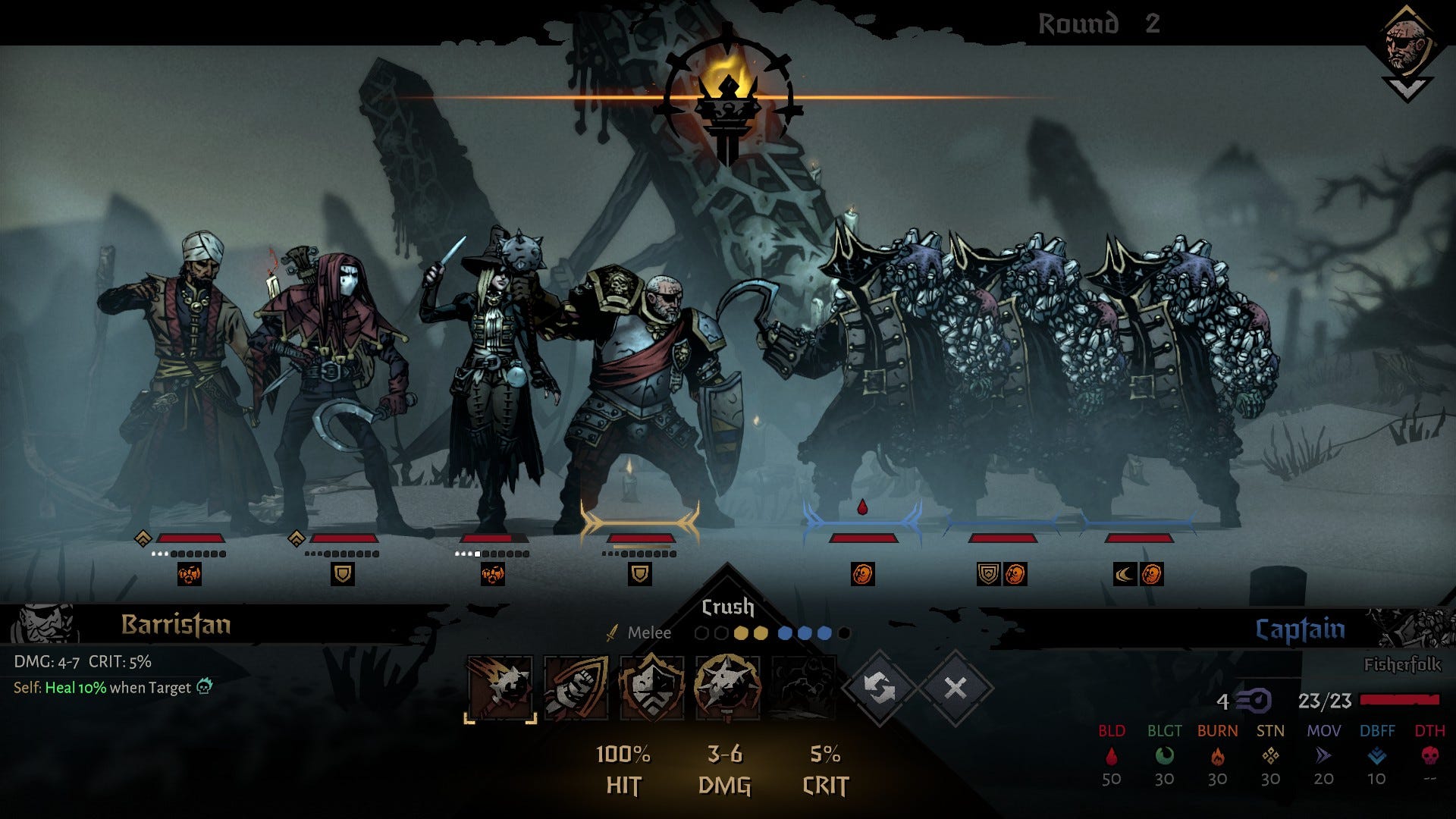
I find it almost as hard to summarise Darkest Dungeon 2 as I do to survive within it. It has a way of engulfing my mind, much as its squalid landscapes of rot and flame are always threatening to swallow up the lonely stage coach that is, to all intents and purposes, the game's star. I'd say I can't see the wood for the trees, but it's more that I can't see the rancid fleshpits for the piles of skulls. Still, here's a tentative, top-down perspective: this is more remake than sequel, an engrossing new version of 2016's nastiest town-and-dungeon RPG, which swaps overseeing a small army of fragile anti-heroes for leading just four along branching, apocalyptic roads towards an ominous mountain and its retinue of Lovecraftian bosses. What was once a kind of hellish workplace simulator has become the world's worst commute.
It has the same broad rhythm as the first game: levelling up characters and the world through exploration and battle, while keeping a lid on the escalating effects of stress and mental or physical illness. But it lashes the key fixtures to a new roguelike campaign format and so, weaves the strategy layer a touch more directly into travel and combat. Rather than sending parties into the catacombs and retreating to a hamlet to patch up their minds and bodies, you trundle across randomly arranged regions from inn to inn, gathering resources and replenishing yourself enroute while battling a huge menagerie of undead woodchoppers, incendiary fanatics and tentacled cosmic invaders. Your coach follows the road automatically - the horses, mercifully, appear to be unkillable. It only requires you to steer at junctions, though you can tug on the reins to crash through piles of debris in the hope of scavenging a consumable item. A busy fold-out UI, meanwhile, grants access to inventories, character screens and your map, which populates itself with landmarks, hazards and, worst of all, question marks at the entrance to each region.
The visuals have been pumped up, the original's hacked and bloodied Hellboy aesthetic wrapped around animated 3D character models, the old pop-up book dungeons cut apart and spread out to form vast, unholy cities, farmlands, forests and coastal villages. There are tweaks and tucks aplenty at the level of the battle system, too, which is clearer and snappier and more oriented toward collaboration between party-members. Still, this is largely a game not of additions, but fiendish rearrangements, which slither about in my head like footloose heroes knocked out of formation, defying me to separate one game from the other.
